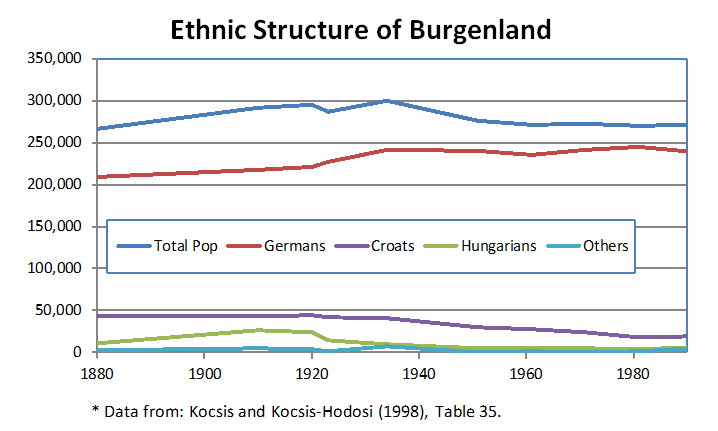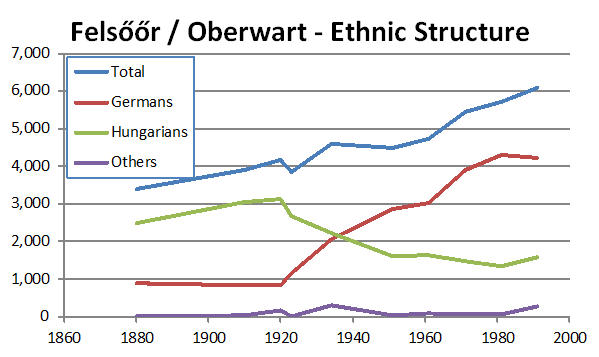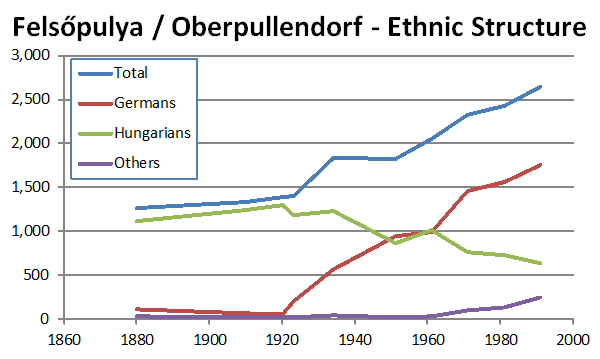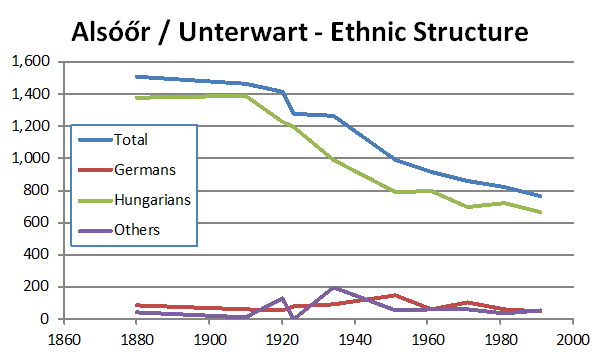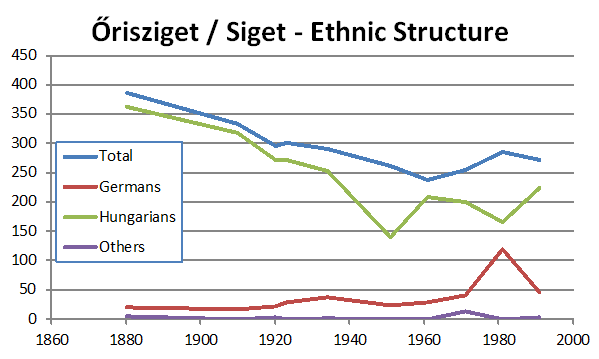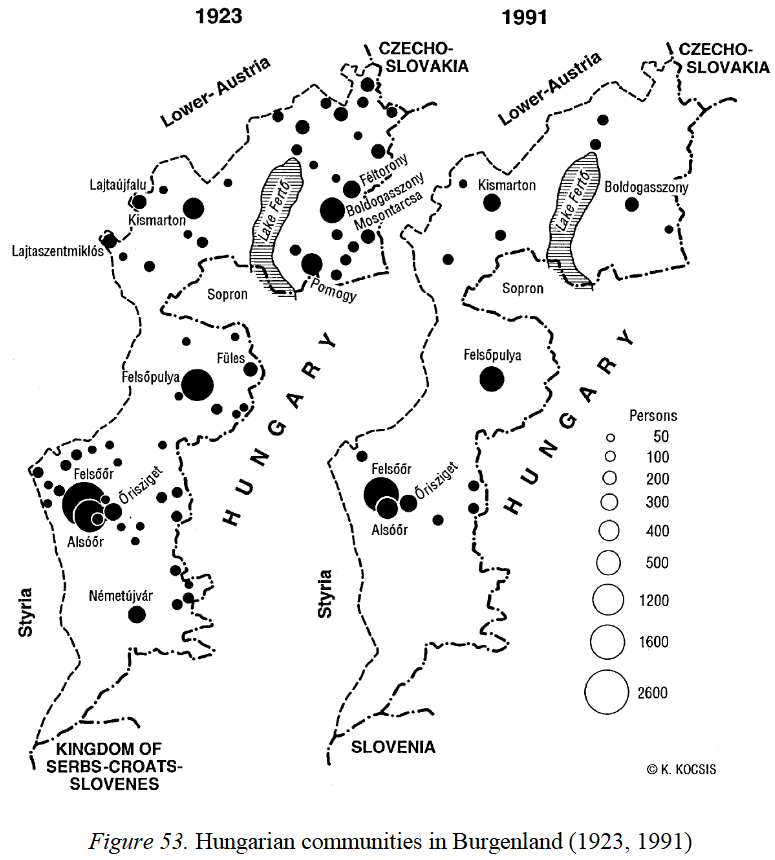|
The
|
||||||||||||||||||||||||||||||||||||||||||||||||||||||||||||||||||||||||||||||||||||||||||||||||||||||||||||||||||||||||||||||||||||||||||||||||||||||||||||||||||||||||||||||||||||||||||||||||||||||||||||||||||||||||||||||||||||||||||||||||||||||||||||||||||||||||||||||||||||||||||||||||||||||||||||||||||||||||||||||||||||||||||||||||||||||||||||||||||||||||||||||||||||||||||||||||||||||||||||||||||||||||||||||||||||||||||||||||||||||||||||||||||||||||||||||||||||||||||||||||||||||||||||||||||||||||||||||||||||||||||||||||||||||||||||||||
THE BURGENLAND BUNCH NEWS - No. 292 November 30, 2018, © 2018 by The Burgenland Bunch All rights reserved. Permission to copy excerpts granted if credit is provided. Editor: Thomas Steichen (email: tj.steichen@comcast.net) BB Home Page: the-burgenland-bunch.org BB Newsletter Archives: BB Newsletter BB Facebook Page: TheBurgenlandBunchOFFICIAL Our 22nd year. The Burgenland Bunch Newsletter is issued monthly online. The BB was founded by Gerald Berghold, who died in August 2008. |
||||||||||||||||||||||||||||||||||||||||||||||||||||||||||||||||||||||||||||||||||||||||||||||||||||||||||||||||||||||||||||||||||||||||||||||||||||||||||||||||||||||||||||||||||||||||||||||||||||||||||||||||||||||||||||||||||||||||||||||||||||||||||||||||||||||||||||||||||||||||||||||||||||||||||||||||||||||||||||||||||||||||||||||||||||||||||||||||||||||||||||||||||||||||||||||||||||||||||||||||||||||||||||||||||||||||||||||||||||||||||||||||||||||||||||||||||||||||||||||||||||||||||||||||||||||||||||||||||||||||||||||||||||||||||||||||
| Current Status Of The BB: * Members: 2684 * Surname Entries: 8467 * Query Board Entries: 5733 * Staff Members: 14 |
||||||||||||||||||||||||||||||||||||||||||||||||||||||||||||||||||||||||||||||||||||||||||||||||||||||||||||||||||||||||||||||||||||||||||||||||||||||||||||||||||||||||||||||||||||||||||||||||||||||||||||||||||||||||||||||||||||||||||||||||||||||||||||||||||||||||||||||||||||||||||||||||||||||||||||||||||||||||||||||||||||||||||||||||||||||||||||||||||||||||||||||||||||||||||||||||||||||||||||||||||||||||||||||||||||||||||||||||||||||||||||||||||||||||||||||||||||||||||||||||||||||||||||||||||||||||||||||||||||||||||||||||||||||||||||||||
|
||||||||||||||||||||||||||||||||||||||||||||||||||||||||||||||||||||||||||||||||||||||||||||||||||||||||||||||||||||||||||||||||||||||||||||||||||||||||||||||||||||||||||||||||||||||||||||||||||||||||||||||||||||||||||||||||||||||||||||||||||||||||||||||||||||||||||||||||||||||||||||||||||||||||||||||||||||||||||||||||||||||||||||||||||||||||||||||||||||||||||||||||||||||||||||||||||||||||||||||||||||||||||||||||||||||||||||||||||||||||||||||||||||||||||||||||||||||||||||||||||||||||||||||||||||||||||||||||||||||||||||||||||||||||||||||||
1) THE PRESIDENT'S CORNER (by Tom Steichen)  In
this month's collection of bits and pieces in Article 1, starts off
with a new regular "bit" that we decided to add: a BB Facebook round-up created by
Vanessa Sandhu. You should expect to see the latest rendition of this "bit" in most newsletters
from now on! That is followed by two DNA-related bits, then a mention of an "Austrian" inn in
Vermont. After that, BB member Margaret Nicklas poses a question that I could not answer
adequately ...so I'm passing the question on to you readers! Then I tell you about an available
online (and free) archive of an early Burgenland newspaper, written in German, of course, and a
new novel (in English) that is based in Burgenland and then the Burgenland-emigrant community in
Minnesota; the author is BB member and long-standing novelist Larry Constantine. We follow that
with an extract from the Körmend Jewish records that speaks, in general, about how Burgenland
Jewish records were handled during and after WW-II, and then an announcement of new Jewish
record transcriptions. We close with our usual bits on the Dujmovits' book, a recipe, and
something silly. In
this month's collection of bits and pieces in Article 1, starts off
with a new regular "bit" that we decided to add: a BB Facebook round-up created by
Vanessa Sandhu. You should expect to see the latest rendition of this "bit" in most newsletters
from now on! That is followed by two DNA-related bits, then a mention of an "Austrian" inn in
Vermont. After that, BB member Margaret Nicklas poses a question that I could not answer
adequately ...so I'm passing the question on to you readers! Then I tell you about an available
online (and free) archive of an early Burgenland newspaper, written in German, of course, and a
new novel (in English) that is based in Burgenland and then the Burgenland-emigrant community in
Minnesota; the author is BB member and long-standing novelist Larry Constantine. We follow that
with an extract from the Körmend Jewish records that speaks, in general, about how Burgenland
Jewish records were handled during and after WW-II, and then an announcement of new Jewish
record transcriptions. We close with our usual bits on the Dujmovits' book, a recipe, and
something silly.Article 2, The Hungarians of Burgenland (Őrvidék), provides the history of the Hungarian presence in the lands that became Burgenland. As odd as it may seem, it is a fact that the Hungarians never had a large presence and have been only an ethnic minority there from the 15th Century to present-day. Even if you are not ethnic-Hungarian, understanding their history is useful for understanding your own; thus do give it a thoughtful read. Article 3 is about a member support effort that resulted in Another Burgenland Connection Made. One of the reasons the BB staff volunteers to work on your behalf is that we share your joy when you have success in tracking down your ancestors and/or your overseas family. This one was indeed enjoyable. Article 4 speaks to the recent Ancestry DNA Announcement of New Ethnicity Estimates. While there is much to like about the likely improved base estimates, I find myself disturbed by the so-called refinements to those estimates that appear to be based solely on the genealogy of one's (usually paternal) surname, a sin I find to be totally unacceptable! The remaining articles are our standard sections: Historical Newsletter Articles, and the Ethnic Events and Emigrant Obituaries sections. 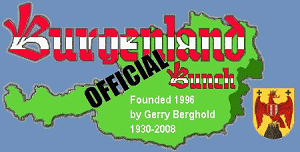 The
Facebook Bunch: We are adding a new "regular" item to this bits and pieces
section: that being, a monthly round-up of activities on the BB Facebook page.
Vanessa Sandhu, a BB staff member and one of the moderators of our Facebook page,
has kindly agreed to write this item; thanks Vanessa! Here is this month's round-up: The
Facebook Bunch: We are adding a new "regular" item to this bits and pieces
section: that being, a monthly round-up of activities on the BB Facebook page.
Vanessa Sandhu, a BB staff member and one of the moderators of our Facebook page,
has kindly agreed to write this item; thanks Vanessa! Here is this month's round-up:Hello Burgenland Bunch! Welcome to the digital brunch with the Facebook Bunch! Here is a little bit of what you might have missed if you haven’t joined us yet. We currently have 756 members who shared 80 new posts last month. We’d love to have you join! We have a very active and helpful group. This month, we have had lots of FHL film translations. From deciphering fancy script to locating birth and marriage records, the Bunch has been keeping busy. Many family postcards and letters have been translated, as well. Several interesting articles have been shared and discussed. One article from legalgenealogist.com discussed artifact testing of old stamps and envelopes for the purpose of extracting your ancestor’s DNA (see artifact-testing-on-its-way for details). Theresa McWilliams shared information regarding the Gathering of Burgenländers and Descendants on November 11, 2018 in St. Louis, MO. Member Lukas Tschida shared his Facebook page called Projekt Apetlon 700 Jahre. Lukas is a student of the HAK Frauenkirchen. He is writing his diploma on the village (Apetlon, Hungarian name "Mosonbánfalva") and its economic development. If anyone has any materials regarding this topic, or knows someone who has emigrated to the US from Apetlon, please feel free to share them with him at ProjektApetlon700Jahre or at email lukas.tschida@bnet.at. Werner Schoenfeldinger shared a lovely YouTube video with the group, showcasing the song of the month [Weint mit mir, ihr nächtlich stillen Haine / Cry with me, her nocturnal quiet grove], sung by the Willersdorf Singers. It is a ballad about death and the afterlife. Here is the link if you’d like to hear it: youtube.com/watch. Next month will be equally interesting, as we plan on sharing our favorite holiday recipes and Christmas traditions! Please consider joining us at TheBurgenlandBunchOFFICIAL. 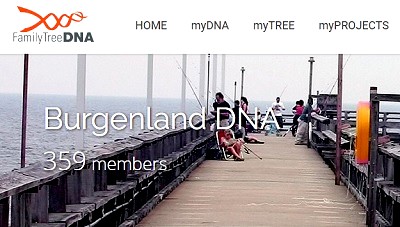 Developing
a Personal Database Developing
a Personal Database of Burgenland Cousins: Frank Paukowits writes: We now have 235 participants in the Burgenland Autosomal DNA Study. Most have had their DNA tested by Family Tree DNA (FTDNA), but others have been tested by other companies and their results have been transferred to FTDNA, which is permitted for a nominal fee. As Group Administrator of the Project, I can obtain special reports that are unavailable to individual participants. One such report is called, the FF Illumina OmniExpress Report. This report provides the names of people in the Project who match with you and who are, in essence, your individual genetic cousins. The number of genetic cousins identified in the report for select individuals has in some cases totaled more than 20. In other cases no one has been identified. Most often the average has been between five and ten. In addition, I could also do a search using other tools, for example the In Common With (ICW) feature, which is highly likely to identify Burgenland cousins who have not yet joined the Project. This would apply in cases where there is a clustering of Burgenländers who are already in the Project with others who have been tested but who are not yet participants. Collectively, this would provide meaningful information for people participating in the Burgenland Autosomal DNA Project, helping them to develop their own mini-database of their Burgenland genetic cousins. I would be willing to share this type of information with any Project participants who would find this data useful. All you would have to do is e-mail me at paukowits1@aol.com with a request and I will provide this information. 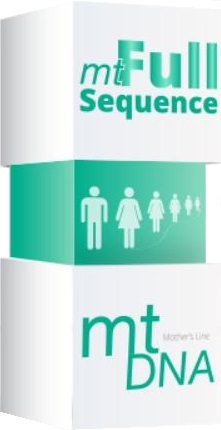 Interesting
mtDNA Match: As you may recall, mitochondrial DNA (mtDNA) is passed down from mother to
child, largely unchanged across the generations, and thus serves as a tracker of the purely
maternal line (men receive mtDNA from their mothers but cannot pass it along). I say only
"largely unchanged" because mutations do occur ...but they are quite rare. For my personal mtDNA
line, T2a1b1a1b, the most recent definitive (i.e., haplogroup-defining) mutation is
estimated to have occurred about 8,400 years ago. Thus it should be apparent that I could be a
mtDNA match to a very diverse group of people. Still, my strongest (GD=0) match has a
most-distant known maternal ancestor who lived in a Burgenland village immediately adjacent to
that of my most-distant known maternal ancestor. Interesting
mtDNA Match: As you may recall, mitochondrial DNA (mtDNA) is passed down from mother to
child, largely unchanged across the generations, and thus serves as a tracker of the purely
maternal line (men receive mtDNA from their mothers but cannot pass it along). I say only
"largely unchanged" because mutations do occur ...but they are quite rare. For my personal mtDNA
line, T2a1b1a1b, the most recent definitive (i.e., haplogroup-defining) mutation is
estimated to have occurred about 8,400 years ago. Thus it should be apparent that I could be a
mtDNA match to a very diverse group of people. Still, my strongest (GD=0) match has a
most-distant known maternal ancestor who lived in a Burgenland village immediately adjacent to
that of my most-distant known maternal ancestor.Just recently I was notified of another GD=0 match (GD stands for genetic distance and is a count of mutation differences), which means we match perfectly on both our haplogroup-defining mutations and on our non-defining mutations (we have 6 of those). What is interesting about this perfect match is that she has an Arabic given name (Hind, meaning smart attractive girl, or the brave beautiful one) and a Muslim surname (withheld) that is found almost exclusively in Pakistan, India and Saudi Arabia, although she has a current email address with the internet country code top-level domain of .se, which is for Sweden. While I cannot say with absolute certainty that none of my more-recent-generation maternal ancestors (say, those living in the last 600 years) spent time in Muslim/Arabic regions, it seems quite unlikely that any did, so it appears that Hind and I are related from the earlier time in the existence of our haplogroup, long before Christian/Muslim and European/Arabic differences had any meaning. It remains a small world, doesn't it? "Austrian" Inn: Dennis Kern, from Connecticut, shared a short note with Frank Paukowits about an inn found a quarter mile from the US/Canadian border in Derby Line, VT; Frank passed the message along to me. While the BB does not endorse any business ventures, we do pass along information that may be of interest to our members, so if interested, explore at your own discretion. 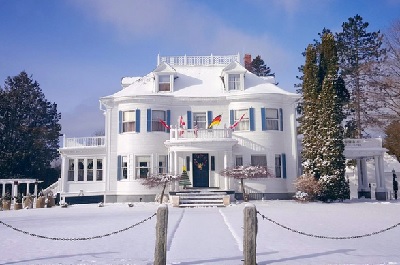 Dennis
wrote (in part): Frank, we hope that all is well. Dennis
wrote (in part): Frank, we hope that all is well.Linda and I discovered an Austrian inn on the Vermont/Canadian border just off Interstate 91. It is called Derby Line Village Inn. Check it out online: derbylinevillageinn.com. The owner/chef is Fritz Halbedl. He hails from Kapfenstein in South Styria, probably only ten miles from Burgenland. The food served is Austrian and excellent. No dinners are served Mondays and Tuesdays. The Inn has six guest rooms. So if any of the "Bunch" are in that area or want a short vacation he/she should call Fritz or his wife Paula to stay or to dine or both. 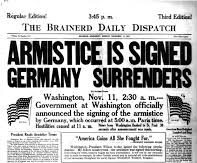 Call
for Comments: BB Member Margaret Nicklas wrote this month and hit me with
a "stumper" of a question, saying: "...before we got too far from the recent 100-year
anniversary of the end of WW-I, I wanted to ask whether the BB had written about the experience
of the end of the Great War for Burgenländers in the US (in, for instance, residents of PA and
NJ). Were there celebrations? Are there photos or stories from the time that have been
circulated or could be?" Call
for Comments: BB Member Margaret Nicklas wrote this month and hit me with
a "stumper" of a question, saying: "...before we got too far from the recent 100-year
anniversary of the end of WW-I, I wanted to ask whether the BB had written about the experience
of the end of the Great War for Burgenländers in the US (in, for instance, residents of PA and
NJ). Were there celebrations? Are there photos or stories from the time that have been
circulated or could be?"While I can answer her question on whether the BB has written on it (answer: no), the more important question to me was the implied one: What do I know about this? And that answer was "very little" ...but what I actually replied to Margaret was: "...about the only thing I know is that the pent-up desire of some migrants to return to Burgenland resulted in a substantial exodus when travel was again allowed after the armistice." Later, I found a photograph of the Nov 11, 1918, "Peace Parade" in Allentown, PA (see below), but that was just a general, not ethnic-specific celebration (Quick question: Does anyone recognize the location? Answered by Larry and Kathy Everhard as: "...7th and Hamilton in downtown Allentown. That is the Soldiers and Sailors Monument." Also by Rose Marie Gallucci, who identified it further as "Center Square." Thanks all!): 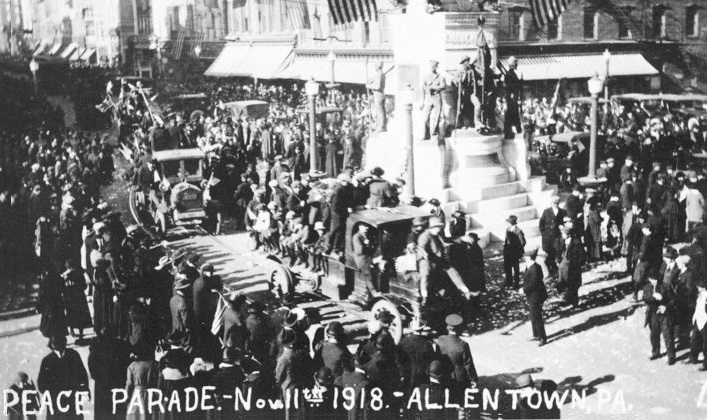 Thus my main question to you BBer's: What do you know about this? Were there ethnic celebrations? Do you have photos or stories about this? If you know or have materials, please share with me so I can share further. Margaret went on to say (in part): "From a personal standpoint, I know my grandparents got married just a couple of months after peace was declared. It makes me wonder if the event and celebrations were a trigger, at least indirectly, of their decision to get married. I wonder if there a mini-baby boom in August 1919?" Well, that last one is a question I could answer with a little research! Below is a graph (slightly edited by me) from the Population Research Institute (based on data from the US National Center for Health Statistics):  As you can see, there was a bump in birth rate immediately after WW-I ended, but it was neither large nor sustained, likely because US soldiers were not overseas very long, so the birth rate wasn't greatly diminished by the war, and because the economic effects of the subsequent Great Depression highly discouraged enlarging families. It would be hard to call this a "baby boom," as it was nothing like the one that occurred post-WW-II. The WW-II "boom" began after a sustained period of depressed birth rates and continued for decades, carried by the economic good times after the war and only stopped by the advent of "the pill" (1960). Regardless, do tell us what you know concerning the US Burgenländer's (i.e., West Hungarian's, at that time) reaction to the end of WW-I.  Burgenländische
Freiheit Online Archive: I recently became aware that the "Burgenländische Freiheit"
(Burgenland Freedom) was a Burgenland weekly newspaper that was founded in November of
1921, shortly after the planned transfer date of Burgenland from Hungary to Austria. It was to
be the party newspaper of the new SPÖ Burgenland (SPÖ = Sozialdemokratische Partei Österreich
= Social Democratic Party of Austria) and it was continuously published by the party until
the end of 2006 (except for when it was banned from 1933 to 1945 during the Fascist/Nazi era). Burgenländische
Freiheit Online Archive: I recently became aware that the "Burgenländische Freiheit"
(Burgenland Freedom) was a Burgenland weekly newspaper that was founded in November of
1921, shortly after the planned transfer date of Burgenland from Hungary to Austria. It was to
be the party newspaper of the new SPÖ Burgenland (SPÖ = Sozialdemokratische Partei Österreich
= Social Democratic Party of Austria) and it was continuously published by the party until
the end of 2006 (except for when it was banned from 1933 to 1945 during the Fascist/Nazi era).
Abbreviated as BF, it, and the Burgenländische Volkszeitung (BVZ), the Burgenland People's Daily, the party newspaper of the Burgenland ÖVP until 2004 (ÖVP = Österreichischen Volkspartei = Austrian People's Party), were the dominant weekly newspapers in Burgenland for many years. What makes the BF interesting is that all available issues from 1922 to 2007 have been scanned and made available online at www.bf-archiv.at in a full-text searchable format (searching in German, of course). As it worked out, although publication of the first edition was intended to be on September 2, the Hungarian resistance to the transfer of Burgenland to Austria delayed printing of a first edition until November 19, 1921, and it had to be prepared in Wiener Neustadt. Then financial difficulties arose, causing erratic and suspended publication in early 1922. It would be April 14, 1922, before regular publication of the Burgenländische Freiheit began, issued every Friday with a volume of six pages. That first "regular" edition was labeled "No. 6, April 14, 1922, 2nd Year" and sentence four of its first article made it clear that this newspaper was, foremost, a political organ. It said "The workers, small farmers and cottagers of Burgenland have already recognized that only the Social Democratic Party can be their true advocate." Despite the fact that its editor was always a political functionary, what made the newspaper a success was that, from the beginning, it reported on all aspects of Burgenland's economy, culture and sports, assuming an essential task in terms of party policy: informing Burgenland citizens. However, with the rise of television and radio as well as numerous changes in the Austrian newspaper landscape, including the gradual disappearance of the party press from the Austrian newspaper landscape, circulation declined significantly in the 1980s, making the economic situation of the newspaper precarious. It had one more growth spurt in the early 1990s with a record-setting 105,000 readers. In 2003, the ÖVP Burgenland sold its party newspaper and the SPÖ Burgenland chose to follow suit in 2006. The Burgenländische Freiheit (freedom) became the Burgenländische Freizeit (leisure), but the non-party publication would survive only into 2009. With the help of the Provincial Government of Burgenland and the EU Regional Promotion, the BF was digitized as a cultural project and has been accessible online since September 2010, with full-text searching available since February 2011. It is the first newspaper in a German-language archive in which the entire archive has an online search. 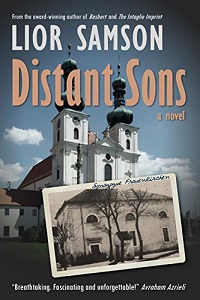 A
New Novel With A Burgenland Connection: BB member Larry Constantine,
a longtime freelance journalist and photographer, and a novelist under pen-name Lior Samson,
is releasing his eleventh novel in early December. Titled Distant Sons, it is his first
historical fiction book and was inspired by real people and actual events. A
New Novel With A Burgenland Connection: BB member Larry Constantine,
a longtime freelance journalist and photographer, and a novelist under pen-name Lior Samson,
is releasing his eleventh novel in early December. Titled Distant Sons, it is his first
historical fiction book and was inspired by real people and actual events. Set in the Burgenland villages of Frauenkirchen and Halbturn in nineteenth-century Austria-Hungary and in the German-speaking communities in Minnesota in the twentieth century, it "traces the journeys of two women, mother and daughter, driven by their dreams, their intelligence, and their determination but facing choices made difficult by the times and the culture." Larry's connection to Burgenland and Minnesota is via surnames SAMSON and HAFNER from Halbturn and RIENER from Frauenkirchen, all of whom settled in Minnesota. For our help and support along the way, the Burgenland Bunch is credited by name in the book. Both print and electronic editions of the book will be available about December 3rd. The Kindle edition can currently be pre-ordered at amazon.com/gp/product/B07KDQFGGQ. 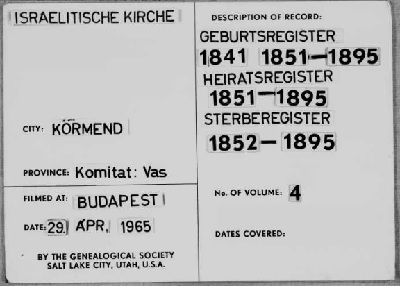 From
the Körmend Jewish records: While looking at the Körmend Jewish Matrikels recently, I
noticed a pair of typed pages inserted at the front of the records. Closer examination showed
that the left-hand page was in German and the right in Hungarian. As I started to translate the
pages, I realized that the two pages said the same thing; just the language differed. From
the Körmend Jewish records: While looking at the Körmend Jewish Matrikels recently, I
noticed a pair of typed pages inserted at the front of the records. Closer examination showed
that the left-hand page was in German and the right in Hungarian. As I started to translate the
pages, I realized that the two pages said the same thing; just the language differed. What the text spoke to was the handling of the Jewish records during and after WW-II. Although this is the only record set where I have noticed this inserted text, clearly it applies to all Burgenland Jewish records. As such, it is well worth reviewing. Thus I provide my translation of it below: The matriculation of Israelite inhabitants in Hungary did not begin until the middle of the 19th century. Even from that time on, it can not be considered ongoing. As a result, there are a lot of subsequent enrollments that were made with a delay of many years. During the Second World War—i.e., in 1944—the Israelite parishes were required to hand over all their records to the relevant municipal archives. The delivery of the matrikels was only partly carried out because of the war events. Of the congregations abandoned in 1944, only a few continued their activities in 1945. They got their records from the archives again. The State Archives [before: Municipal Archives] possess thus also original records apart from the previously stored copies. Another part of the Israelite matriculation is kept by today's Israelite parishes, but, unfortunately, the destruction of a certain part must also be expected. Taking into account the above-mentioned circumstances, all findable Israelite records were recorded and treated before the filming as follows: Due to the county division of the year 1895, the matrikels were ordered alphabetically by county and then by place names. Since the duplicates are rarely completely identical with the possibly existing originals, in each case—where that was possible—first the originals and afterwards the secondaries were recorded. As a result of the known circumstances, the records of the Neologic and Orthodox communities could not always be separated in one place. New Jewish Vital Records Transcriptions: The Austrian Jewish Museum (Österreichischen Jüdischen Museum, OJM, at www.ojm.at) has announced the availability of transcriptions of birth, marriage and death records from the Jewish Records at Stadtschlaining (Város-Szalónak) for the period 1841 to 1920. These databases are available via the Museum's website; the BB provides links to their online digital indexes only, found via our Vital Records Transcriptions section on the home page. The online indexes can be searched, sorted and filtered, not only by name, but by all column headers. There currently are 1,603 births, 288 marriages and 757 deaths documented in the three databases. Credit goes to OJM director Johannes Reiss and his staff for producing the data and copyright remains with the Museum. Please note that the page instructions and column headers are presented in German but we provide translations of those instructions on our link page.  Update
for book "The Burgenländer Emigration to America": Here is this month's update on
purchases of the English issue of the 3rd edition of Dr. Walter Dujmovits' book "Die
Amerika-Wanderung Der Burgenländer." Update
for book "The Burgenländer Emigration to America": Here is this month's update on
purchases of the English issue of the 3rd edition of Dr. Walter Dujmovits' book "Die
Amerika-Wanderung Der Burgenländer."Current total sales are 1354 copies, as interested people purchased 13 more books during this past month. If you still need a Christmas present or two, there is still plenty of time to order and receive the book(s). As always, the book remains available for online purchase at a list price of $7.41 (which is the production charge for the book, as we purposely choose not to make a profit so we can avoid dealing with the income tax consequences and so you can obtain the book at as low a cost as possible!), plus tax & shipping. See the BB homepage for a link to the information / ordering page and for information about current discounts (there is at least one discount on price or shipping available most of the time... if not, wait a few days and there will be one!). Burgenland Recipes: This holiday recipe is from Pam Walton, a resident of England. Her mother was born in Eberau, Burgenland, moved to England in 1947 and made Christmas biscuits every year thereafter. This recipe comes from her mother's handwritten booklet of biscuit recipes. It must be authentic, because Europeans would likely have used the metric measurements Pam provided. The American equivalents are only approximate, so you will have to experiment and adjust the taste to your liking. Thanks Pam; we hope you will share your other 17 recipes with us, too!  Austrian
Christmas Biscuit (Florentiner) Austrian
Christmas Biscuit (Florentiner)(from Pam Walton) Ingredients-dough: 250 ml (1 cup) single cream (US: light cream) 175 g (6-1/4 oz) icing sugar 175 g (6-1/4 oz) peeled almonds, chopped 175 g (6-1/4 oz) candied orange peel, chopped 80 g (3 oz) plain flour 2 Tbsp Cognac Note: single/light cream is 18-20% butterfat. If you can't find it, substitute 1/2 cup milk and 1/2 cup whipping or heavy cream. Ingredients-paste/icing: 150 g (5 oz) good quality dark chocolate 20 g (3/4 oz) unsalted butter 2 Tbsp hot water Preparation-dough (day 1): Bring cream to a boil, remove from the heat and mix in the next four ingredients. Leave to cool, then mix in the Cognac. Cover and leave to stand overnight. Preparation-dough (day 2): Using a teaspoon make little mounds with the mixture and place on a non-stick baking tray, leaving a good space between them. Bake at 200şC(400şF) for about 10 minutes, until well-set. Then cool. Preparation-icing (day 2): Melt the chocolate, butter and water together to make a smooth paste/icing and cover the backs of the Florentines with this.  Reminder:
We no longer have a "regular" source for Burgenland recipes. As evidenced above, a few readers
have shared favorite family recipes, and we do have a reserve for a couple of months now, but if
contributions stop coming in, we'll be begging again! So, please consider sharing your favorite
Burgenland recipes or recipe books with us. Our older relatives sadly aren't with us forever, so
don't allow your allow your favorite ethnic dishes to become lost to future generations. Send
your suggestions to BB Recipes Editor,
Alan Varga. Thanks! Reminder:
We no longer have a "regular" source for Burgenland recipes. As evidenced above, a few readers
have shared favorite family recipes, and we do have a reserve for a couple of months now, but if
contributions stop coming in, we'll be begging again! So, please consider sharing your favorite
Burgenland recipes or recipe books with us. Our older relatives sadly aren't with us forever, so
don't allow your allow your favorite ethnic dishes to become lost to future generations. Send
your suggestions to BB Recipes Editor,
Alan Varga. Thanks!Cartoon of the Month:  |
||||||||||||||||||||||||||||||||||||||||||||||||||||||||||||||||||||||||||||||||||||||||||||||||||||||||||||||||||||||||||||||||||||||||||||||||||||||||||||||||||||||||||||||||||||||||||||||||||||||||||||||||||||||||||||||||||||||||||||||||||||||||||||||||||||||||||||||||||||||||||||||||||||||||||||||||||||||||||||||||||||||||||||||||||||||||||||||||||||||||||||||||||||||||||||||||||||||||||||||||||||||||||||||||||||||||||||||||||||||||||||||||||||||||||||||||||||||||||||||||||||||||||||||||||||||||||||||||||||||||||||||||||||||||||||||||
2) THE HUNGARIANS OF BURGENLAND (ŐRVIDÉK) Editor: I have written much about the German-ethnic presence in West Hungary in the years before Burgenland became an Austrian political entity, and others have written similarly about the Croatian-ethnic presence, but little has appeared in the BB newsletter about the comparatively small Hungarian-ethnic presence. As unlikely as it seems, the Hungarians were a weak third in the pecking order based on population numbers, being about half that of the already small Croatian count. Nonetheless, it seems appropriate that we should know more about them: where they lived, how many there were, why their numbers have dwindled over time, etc.; and recently I discovered a source that does an excellent job of telling us about these things.  That
source is Chapter 8, from book: Ethnic Geography of the Hungarian Minorities in the
Carpathian Basin, Károly Kocsis and Eszter Kocsis-Hodosi. Geographical Research
Institute, Research Centre for Earth Sciences and Minority Studies Programme, Hungarian
Academy of Sciences. Budapest, 1998. pp 194-203. A pdf of the complete book is found
here:
www.mtafki.hu/konyvtar/kiadv/Ethnic_geography.pdf. That
source is Chapter 8, from book: Ethnic Geography of the Hungarian Minorities in the
Carpathian Basin, Károly Kocsis and Eszter Kocsis-Hodosi. Geographical Research
Institute, Research Centre for Earth Sciences and Minority Studies Programme, Hungarian
Academy of Sciences. Budapest, 1998. pp 194-203. A pdf of the complete book is found
here:
www.mtafki.hu/konyvtar/kiadv/Ethnic_geography.pdf.Do note that both the Introduction and Chapter 1 (Hungarian Minorities in the Carpathian Basin) of the book include some general commentary about Hungarians in Burgenland, but those sections are not included in this article; please refer to the pdf file for more information. Also, I'm sure that other chapters of the book will do a similarly excellent job of describing the Hungarian minority presence in other regions that are no longer part of Hungary; do review the book if you have interest in such areas. Lastly, I'll note that the authors of the book have done an admirable job of (mostly) not letting the old Hungarian animosity over the loss of Burgenland to Austria color their work. Thus, below is a reformatting of Chapter 8 into BB Newsletter format. I have added occasional editorial notes (in square brackets: [note]) as I saw fit, and also added German place names (in italicized square brackets: [place name]) when the authors presented only a Hungarian name. Although the chapter is somewhat long, I found it quite interesting and believe it is well worth reading ...regardless of your ethnic persuasion... so here it is: CHAPTER 8: THE HUNGARIANS OF BURGENLAND (ŐRVIDÉK) The most popular Hungarian name for Burgenland, the easternmost and also the youngest province of Austria, which is used by the Hungarians of that region, is Őrvidék (‘border-guard region’)—not to be confused with the name of the region of Upper (Felső-) Őrség [Oberwart]. At the end of the First World War, this West Hungarian Transdanubian territory was referred to as “Vierburgenland” (the region of four counties), including the German names of towns there: Pozsony, Moson, Sopron and Vas counties as Pressburg, Wieselburg, Ödenburg and Eisenburg. After the Czech troops occupied Pozsony City in January 1919, only the name of “Dreiburgenland” (the region of three counties) was used. In 1921 it finally became part of Austria under the name of Burgenland. The name is appropriate, for numerous places of the historical Hungarian border-fortress chain (Fraknó, Kabold, Lánzsér, Léka, Borostyánkő, Szalónak, Németújvár, etc.) [Forchtenau, Kobersdorf, Landsee, Lockenhaus, Bernstein, Stadtschlaining, Güssing, etc.] can be found in the 166 kilometre-long [103 miles] territory, which narrows to a width of 5 kilometres [3.1 miles] near Sopron. The number of the Hungarian descendants of the medieval defenders of the former western Hungarian borderland, who mainly inhabit the Upper (Felső-) Őrség [Oberwart] region and Felsőpulya [Oberpullendorf], numbered 6,763 according to the 1991 Austrian “Everyday language” ("Umgangssprache") census data. THE NATURAL ENVIRONMENT The physical geography of the province is open towards the East (Hungary) and relatively closed towards the West (the inner part of Austria). The Hungarians of the Upper (Felső-) Őrség region inhabit an area next to the Pinka and Szék [Zickenbach] Streams, which flow through the South Burgenland Hill and the Terrace Land, while the inhabitants of Felsőpulya [Oberpullendorf] live in the Felsőpulya [Oberpullendorf] Basin surrounded by the Kőszeg [Güns], Lanzsér [Landsee] and Sopron [Ödenburg] Mountains (Fig. 51). The remaining Hungarians live mostly in Kismarton [Eisenstadt]—with a population in 1991 of 10,349—this is the capital of Burgenland at the southern foot of the Lajta [Leitha] Mountains, and in the Fertőzug [Seewinkel] region, located between the Hungarian border and Lake Fertő (Neusiedler See).  The important rivers of the region are the Lajta, Vulka, Csáva, Répce, Gyöngyös, Pinka, Strém, Lapincs and Rába [Leitha, Wulka, Stooberbach, Rabnitz, Güns, Pinka, Strem, Lafnitz, Raab]. Its internationally renowned still waters include Lake Fertő [Neusiedler See], the third largest lake in Europe. The 35 kilometre-long [22 miles] lake gathers waters from Northern Burgenland. The pebble basin of Lake Fertő, a great tourist attraction and also referred to as the Lake of the Viennese, dates back to the Ice Age and is covered by close to one-hundred small lakes—most of them part of a nature conservation area. ETHNIC PROCESSES DURING THE PAST FIVE HUNDRED YEARS As a result of settlement policies initiated by landowners to replenish the population on the estates within this borderland region, and owing to losses during warfare between kings Friedrich IV of Austria and Matthias Corvinus of Hungary, the Hungarian population formed a minority in the present-day territory of Burgenland by the end of the 15th century. Boundaries of a subsequent German ethnic area had already been formed by this time (Fig. 52). Apart from the much depleted Hungarian ethnic area (Fertőzug [Seewinkel], patches in the Kismarton [Eisenstadt] and Felsőpulya [Oberpullendorf] basins, in the Pinka Valley and Németújvár [Güssing]), Burgenland was inhabited entirely by German speaking people. The biggest Hungarian ethnic pocket in the environs of Felsőőr [Oberwart] was connected with the Hungarian ethnic block of West Pannonia through a corridor stretching along the Pinka Valley.1  During the 16th and 17th centuries, as a consequence both of the Turkish campaigns (1529, 1532, 1664, 1683) and internal warfare, the Hungarian population which inhabited areas along military roads, river valleys and basins disappeared almost completely from the territory of Burgenland, except for the surroundings of Felsőőr [Oberwart] and Felsőpulya [Oberpullendorf]. The survival of the Hungarians within these two ethnic pockets was ensured by the collective rights of nobility, which prevented the moving of foreigners into villages possessing such privileges or removing their collective land or property.2 A planned settlement of Croatian refugees into depopulated villages started in 1533, immediately after the siege of Kőszeg, and lasted for one and a half centuries, primarily targeting the following estates: Vörösvár [Rotenturm an der Pinka], Szalónak [Stadtschlaining], Rohonc [Rechnitz], Kismarton [Eisenstadt]. The Croatian newcomers naturally moved not only to abandoned villages but also created new settlements in unpopulated woodland areas, e.g. Újhegy [Neuberg], Őridobra [Neuhaus in der Wart], Pónic [Punitz], Horváthásos [Kroatisch Ehrensdorf], Lipóc [Lipold], Borosd [Weingraben].3 After the Turkish wars and the War of Independence led by F. Rákóczi II, a repopulation of the devastated areas (firstly in Moson County) took place almost exclusively by resettling German colonists in the first half of the 18th century. In some places, Hungarians were settled on the initiative of landowners, too (e.g. Felsőpulya [Oberpullendorf], 1747). In the 1773 census, the present-day area of Burgenland was a Germanised region with both large and small Croatian ethnic blocks, and only ten settlements had a Hungarian-speaking majority. In the second half of the 18th century, due to the boom in cereal growing, its the geographical position (the proximity of the Danube as a means of transport), and the closeness to the market at Vienna, manors on the big estates of Moson County and primarily in the Fertőzug [Seewinkel], were established in great numbers, specialising in cattle breeding, cereal and sugarbeet growing. The inhabitants of these manors were recruited from among the landless Hungarians living on the neighbouring Kapuvár estate and in the Csallóköz4 [Große Schütt Insel] region. The mushrooming of manors inhabited by Hungarians (they numbered 7 in 1784, 14 in 1869 and 38 in 1930) turned the formerly homogeneous German area between Lake Fertő and Moson-Danube into an ethnically varied one. At the same time, the abolition of the collective privileges of the nobility in 1848 created a grave ethnic situation for the descendants of the medieval border guards (Felső Őrség [Oberwart], Felsőpulya [Oberpullendorf]) who lived in the central and southern areas of Burgenland. The abolition of collective land property rights, which had earlier strengthened the collective sense of identity and preserved the original Hungarian ethnic pattern, now allowed the resettlement of Germans in the Hungarian ethnic pockets. Germans came from surrounding villages to these areas, which were centres of transport and markets (Felsőőr [Oberwart], Felsőpulya [Oberpullendorf]. In some villages of mixed population this accelerated Hungarian assimilation (whose proportion in Vasjobbágyi [Jabing], for example, was 57% in 1828, 16% in 1880 and 8% in 1920). During the period following the Austro-Hungarian Compromise (1867), an event which curbed the process of Germanization, the first population census that also inquired about people’s native language took place in 1880. The census of a total population of 266 thousand was taken on the territory of Burgenland; 78.8% of them were Germans, 4.2% (11,162 persons) were Hungarians and 16.1% were Croats (Table 35). Due to the high esteem of the Hungarian statehood, there was a greater emigration of local Germans. There was also a natural assimilation of non-Hungarians between 1880 and 1910, thus the proportion of Hungarians within the population increased from 4.2% to 9%, while that of the Germans dropped from 78.8% to 74.4%. The ethnic pattern of the rural areas, compared with the state one hundred years before, did not change significantly, apart from a slow Germanization of ethnic Croatian pockets in the surroundings of Németújvár [Güssing], and the appearance of several manors in Moson County. The Hungarian-German ethnic border remained unchanged. Table 35. Ethnic Structure of the Population on the Present Territory of Burgenland (1880–1991)
Sources: 1880, 1910, 1920: Hungarian census data (mother/native
tongue), 1923, 1934: Austrian census data (language affiliation), 1951, 1961, 1971, 1981, 1991:
Austrian census data (Every-day Language / “Umgangssprache”). Remark:
"Germans": German (native) speakers
Sources: 1880, 1900, 1910, 1920: Hungarian census data (mother/native
tongue), 1923, 1934: Austrian census data (language affiliation), 1951-1991: Austrian census
data (Every-day Language / “Umgangssprache”). Remark: Felsőpulya
[Oberpullendorf] includes Középpulya [Mitterpullendorf]. |
||||||||||||||||||||||||||||||||||||||||||||||||||||||||||||||||||||||||||||||||||||||||||||||||||||||||||||||||||||||||||||||||||||||||||||||||||||||||||||||||||||||||||||||||||||||||||||||||||||||||||||||||||||||||||||||||||||||||||||||||||||||||||||||||||||||||||||||||||||||||||||||||||||||||||||||||||||||||||||||||||||||||||||||||||||||||||||||||||||||||||||||||||||||||||||||||||||||||||||||||||||||||||||||||||||||||||||||||||||||||||||||||||||||||||||||||||||||||||||||||||||||||||||||||||||||||||||||||||||||||||||||||||||||||||||||||
3) ANOTHER BURGENLAND CONNECTION MADE One of the nice things about being a BB staff member is the opportunity to help Burgenland descendants make connections to family remaining in Burgenland. Vicariously sharing their joy when contact is made is quite rewarding, and I had the opportunity twice this past month. Here is (part of) the story for one... We received a New Member Information form from Christine Ellen Bulthuis of Chicago, wherein she noted an interest in the Lutheran Schwartzl family from Tauka. Christine stated that her grandmother, Johanna Schwartzl, and brothers, Charlie and John, emigrated to Chicago in 1909, whereas brothers Gus and Frank stayed in Austria. Christine wrote: "Would love to know if the family is still there and any info about who their parents were. Johanna was born 12/2/1888, Charles was born 3/6/1885, and John was born around 1887." I answered, saying (in part, and inaccurately, as it worked out): Answering the question on the parents is easy: Ferencz (Frank) Schwarzl and Maria Halb, of Tauka house 41. You will find those names on the birth records I attached (not shown in this article). -- Johanna was baptized as Janka, but it is the same name. -- John was born 29 Aug 1886. -- Karoly (Charles) was born on the date you list... but his mother is listed as Susanna Halb... a little mystery you will need to resolve. As for whether the family is still there, there is no way to prove that. However, putting Schwarzl and Tauka in the online Austrian phonebook [found here: www.herold.at/telefonbuch] gives the following: Schwarzl Elfriede Tauka 41 , 8384 Minihof-Liebau (B) So, you have a Schwarzl living at Tauka house 41... pretty good odds that she is a relative, given the same house number! After Christine replied to thank me for the information and records that I had sent, she noted: "I guess I will have to put on my Nancy Drew hat to figure out the mystery with Charles." That mystery being, of course, in reference to the differing maternal first name I had noted. However, by then I had looked again at these records... I wrote again (in part): I’ll take back what I said about Maria / Susanna Halb... On closer examination, all three mother’s names read Susanna! (The writing is so bad it fooled me; I actually spent more time working out the mother’s surname (Halb vs. Kalb). The above is a warning: Despite my experience with the writing in the Burgenland records, I twice misread Susanna as Maria... and it was only the sheer perplexity of finding two different maternal names in the face of Christine's written confidence that the three were full siblings that made me go look again.  To
the right is the first one that led me astray (see last line... Maria or Susanna?;
also see the last word in the second line as to why I was debating Halb vs. Kalb).
Looking again now, I have to force myself to see Maria... but I never considered
Susanna the first time I looked at it! To
the right is the first one that led me astray (see last line... Maria or Susanna?;
also see the last word in the second line as to why I was debating Halb vs. Kalb).
Looking again now, I have to force myself to see Maria... but I never considered
Susanna the first time I looked at it!Having corrected that (and also providing some information about the brothers who remained in Burgenland, as well as about their parents), several months passed before I received the following: Christine wrote: Hi Tom, just wanted to give you an update. The family member Elfriede Schwarzl, who you found the address for at Tauka 41, turned out to be my great uncle’s daughter-in-law. Unfortunately she passed away in May this year. However, between the info you found for me and looking at a family tree on Ancestry, I reached out to a girl who had a lot of the same family info as I did. She had Elfriede Schwarzl listed in her tree. It turns out that Elfriede was her grandmother. We are definitely related and have been corresponding back and forth. Her family had pictures of my family. She told me that, when they were cleaning her grandmother’s house, they found a bunch of old Hungarian documents that go as far back as 1770. I now know who my great, great, great grandparents were. None of this would have been possible if I hadn’t found my grandma’s and great uncle’s name on the Burgenland Memorial page [BH&R] which lead me to Burgenland Bunch website. Thanks once again... So there we are... great joy about the new family connections and knowledge, but also sadness that Elfriede died before contact could be made with her. I remain very pleased for Christine and hope that each of you may enjoy similar success too. |
||||||||||||||||||||||||||||||||||||||||||||||||||||||||||||||||||||||||||||||||||||||||||||||||||||||||||||||||||||||||||||||||||||||||||||||||||||||||||||||||||||||||||||||||||||||||||||||||||||||||||||||||||||||||||||||||||||||||||||||||||||||||||||||||||||||||||||||||||||||||||||||||||||||||||||||||||||||||||||||||||||||||||||||||||||||||||||||||||||||||||||||||||||||||||||||||||||||||||||||||||||||||||||||||||||||||||||||||||||||||||||||||||||||||||||||||||||||||||||||||||||||||||||||||||||||||||||||||||||||||||||||||||||||||||||||||
4) ANCESTRY DNA ANNOUNCES NEW ETHNICITY ESTIMATES In mid-September, AncestryDNA released updated ethnicity estimates for its customers, with the expectation that everyone in the AncestryDNA database will see some change in their estimate. The update represents a significant refinement of AncestryDNA’s ethnicity estimates, as both the reference populations and the ethnicity algorithm underwent significant change. The size and makeup of the reference populations grew substantially, from ~3,000 reference samples to ~16,000 reference samples. The update also added 17 new regions to the ethnicity analysis (from 363 to 380 regions) and many regions were redefined or their names were changed to more accurately reflect that region. Further, AncestryDNA changed its ethnicity-calculating algorithm, now using stretches of DNA to perform the calculation instead of individual SNPs. Not surprisingly, the changes have been met with mixed response, lauded by those who feel their estimates are now more accurate and decried by those who feel their new results are less logical. From a personal viewpoint, I find aspects to both like and greatly dislike about both the old and new estimates, while at the same time acknowledging that it is extremely difficult to tease out the underlying ethnicities of the Germanic mutt that I am. I'll also note that there really isn't a whole lot of difference in my top-level estimates, less a lot of relabeling: New Ethnicity Estimates on the left; Old Ethnicity Estimates on the right... 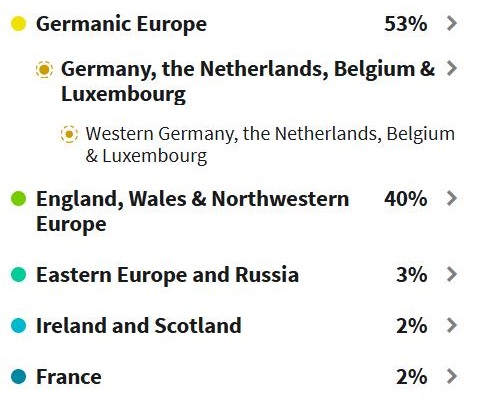
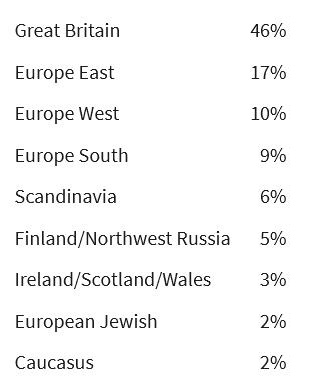 Looking at the above more closely, My old 46% "Great Britain" is now 40% "England, Wales & Northwestern Europe"; the 3% "Ireland/Scotland/Wales" is now 2% "Ireland and Scotland"; the 5% "Finland/Northwest Russia" plus the 2% "Caucasus" is now 3% "Eastern Europe and Russia"; leaving the 36% in the old "Europe East", "Europe West" and "Europe South" to become the core of the new 53% "Germanic Europe" and 2% "France". Only the old 6% "Scandinavia" and 2% "European Jewish" do not seem to have an obvious home in the new estimate, so they appear to have dropped out. While I don't think of myself as having any English in me, I do acknowledge that there was much interaction of ancient English peoples crossing the English Channel and southern North Sea with residents of the Northwestern European coastal areas, which the new "England, Wales & Northwestern Europe" group name also acknowledges. My paper-based 25% Luxembourg roots certainly falls within this Northwestern European group, even though my Luxembourgers were German-speakers. The AncestryDNA-supplied diagram below shows the 5 main regions in my new estimate, including the one the loops across England and Northwest Europe. 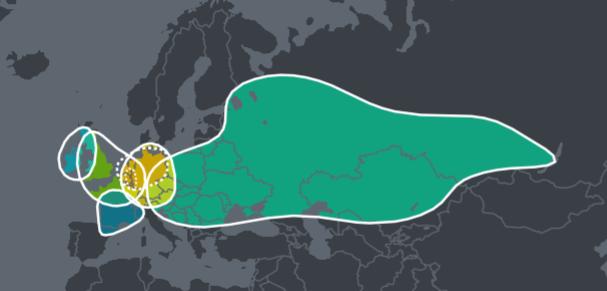 Blowing up the core of the above diagram lets more detail reveal itself: 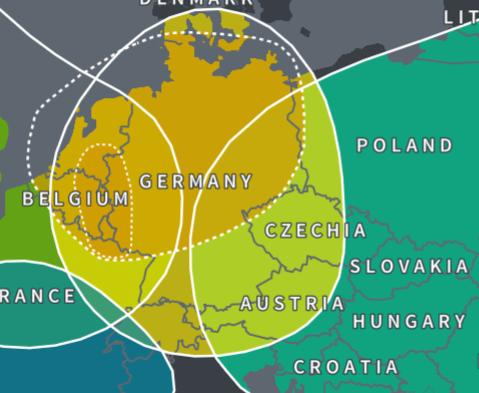 The largest complete ring (solid line) in this image is the "Germanic Europe" region, to which my estimate assigns 53% of my ethnicity. Given we all have Burgenland roots, I'm sure you note that this "Germanic" ring fails to include Burgenland (which I'll forgive as sloppy artistry!). If it did include Burgenland, that ring would encompass 100% of my known ancestry, as least as far back in time as my paper genealogy goes (as drawn, only 75%). However, given the Germanic nature of my Burgenlanders, they almost certainly were from somewhere within that Germanic ring before emigrating to Burgenland in the late 1600s. Thus, having the majority of my ethnicity assigned to this region, and having every other assigned region overlap this region (except the 2% Ireland and Scotland), seems quite correct. Where I do have great concerns about this "ethnicity estimate" is with the refinement of this "Germanic Europe" region into sub-regions "Germany, the Netherlands, Belgium & Luxembourg" and then into "Western Germany, the Netherlands, Belgium & Luxembourg" (the nested dotted line regions shown above). Nothing about these refinements feel like they are based on DNA to me! Rather, they appear to be based on paper family trees that recognize that my paternal Steichen surname comes from Luxembourg (as do all Steichen's who can be traced back to the 1500s). In fact, 25% of my paper-based ancestry does come from Luxembourg... but an equal amount comes from Burgenland (half of my known maternal ancestry). Further, half of my known paternal DNA comes from Germanic regions well outside of the first so-called refinement, much less the narrower second refinement. While it is true that one maternal great-grandparent came from within the region of the first refinement (but not the second), the other three do not. And I have a very difficult time believing that all these disparate lines, maternal and paternal, somehow converge in the distant past back in the Luxembourg area! This leads me to believe that these refinements have little to do with DNA and everything to do with a calculated genealogy of a paper-based nature based on surname alone. If so, the estimates grossly commit the sin of pretending that we are ethnically only what our surname suggests! And I find that appalling coming from Ancestry.com! How misleading this type of thing must be for customers with little genealogy or DNA knowledge! In fact, my eight great-grandparent lines only came together in the 1850-1900 period in central Minnesota... and prior to that in the wider reaches of Germanic Europe. If only Ancestry.com had stopped there, I would have been quite pleased... instead I feel inapropriately manipulated. PS: After I wrote the above article, I saw a television advertisement for AncestryDNA that clearly indicated that these refinements were based on their large genealogical database, not on an analysis of one's DNA. Thus they confirmed my suspicions and, in that ad, clearly and truthfully, in just a few words, explained how they perform their refinements. However, my subsequent re-review of "My DNA Story" on the AncestryDNA website showed that the accompanying text still does not explicitly explain where DNA-based prediction ends and where genealogy-linked refinement takes over. Further, the sin of tying my ethnicity solely to my paternal surname remains... and that is unacceptable. |
||||||||||||||||||||||||||||||||||||||||||||||||||||||||||||||||||||||||||||||||||||||||||||||||||||||||||||||||||||||||||||||||||||||||||||||||||||||||||||||||||||||||||||||||||||||||||||||||||||||||||||||||||||||||||||||||||||||||||||||||||||||||||||||||||||||||||||||||||||||||||||||||||||||||||||||||||||||||||||||||||||||||||||||||||||||||||||||||||||||||||||||||||||||||||||||||||||||||||||||||||||||||||||||||||||||||||||||||||||||||||||||||||||||||||||||||||||||||||||||||||||||||||||||||||||||||||||||||||||||||||||||||||||||||||||||||
5) HISTORICAL BB NEWSLETTER ARTICLES Editor: This is part of our series designed to recycle interesting articles from the BB Newsletters of 10 years ago. For this month, however, I did not find a 10-year-old article that I wanted to publish again, thus I go back to September 2000, for two articles on Croatian Language and Origins. Although Frank Paukowits has published more recently on these topics, these older articles make a few additional points. THE BURGENLAND BUNCH NEWS - No. 88 September 30, 2000 CROATIAN ORIGINS (Janet Cobb, Frank Teklits, et al) To Messrs. Teklits and Berghold (from Janet Cobb): In regard to the website of the Burgenland Croatian Culture Center, whose address you published earlier in the summer... As you may know, the website pages are now available in English. They contain an excellent history and timeline for Burgenland, besides information about the Center and its activities. I wrote to them and asked a question about the dialect map, since I had previously read that there were three or four Croatian dialects spoken in Burgenland and this map appears to list seven. Here's the reply I received from Mr. Franjo Schruiff of the Center: "...The map on our homepage shows the villages and regional/dialectal groups. Generally, you will find mostly "Cakavian" dialects among the Croatian population in Burgenland. But there are also some regional differences inside the Cakavian population. And at this level you may distinguish among the Haci, Poljanci, Dolinji, and so on. "The name "Haci" has its origin in the Croatian name of the region in the north of Burgenland. It is called "Hati", in German "Heideboden" (heath land). "Poljanci" is coming from Polje, meaning "field." This group lives in the valley of the river Wulka. (The Wulka passes Mattersburg and Eisenstadt, then flows into the Neusiedler See.) "Both groups are Cakavian, and the differences are not very big. But they feel as "a little bit different" communities, mostly because of regional aspects. "Today it is not possible to give an answer where the people from the different regions originally came from. We know only where the old homeland of the Burgenland Croats was in general." I thought this information might be of interest to Burgenland Bunch readers so I am forwarding it. Mr. Teklits, a question I asked you about the possible origins of my family surname was also answered by Mr. Schruiff. I just want to thank both of you gentlemen for answering my previous letters to you and for publishing the address of this organization. Comment from the editor (Gerry): Re: "Today it is not possible to give an answer where the people from the different regions originally came from. We know only where the old homeland of the Burgenland Croats was in general." Janet: this is not exactly correct. There have been a number of Austrian-Hungarian scholars who have correlated regional origins using both the dialect similarities as well as the family names in both early Burgenland (Güssing Herrschaft) and early Croatian Batthyány Urbars. They pinpoint Burgenland Croatian origin to villages south of Zagreb, some of which never recovered from the Turkish incursions and no longer exist. A knowledge of local Croatian history would be necessary to find their exact location. Robert Hajszan in "Die Kroaten der Herrschaft Güssing", Literas-Wien Verlag 1991 is just one of the available references. There are others and the field is growing, albeit slowly. Some of many examples (there are 149 pages of them) that Hajszan shows is: > From the Güssing Urbar of 1576: the family name Krysanytt (later Krasanits?) in Grossmürbisch correlating to Krysanchych in the Urbar of 1519 Stynychnyak (Croatia) - the Castrum (castle) > From the village of Rauchwart 1576 to Stynychnyak-village of Lypye 1519 Kattych (Kattits?) to Kachych Admittedly not for amateurs, this requires the ability (which I don't have) to read the 16th century languages and script and only pinpoints family names, not individuals. It is also necessary to be able to trace the changes which have taken place in the spelling of the family and village names through 3 or 4 languages! Except for the recent work of Frank Teklits, none of these sources have been translated from the German. Something to look for and be aware of, however. Would that we had the same for German immigrants to the Burgenland. THE BURGENLAND BUNCH NEWS - No. 88A September 30, 2000 CROATIAN LANGUAGE COMMENTS (from Yvonne Lockwood) In the last newsletter regarding languages, you list Serbo-Croatian as one of the spoken languages in the Burgenland. Today, this is more true than ever before because of the large number of Bosnian refugees. However, the Burgenland Croats, present in the Burgenland and western Hungary since 16th century, according to oral tradition, speak Croatian. The reason I make this point is that their language is quite different from the Croatian spoken in Croatia (and therefore from Serbian) because of language shifts in the territories of origin that occurred after major migrations. Gradiscanski Hrvatski cannot today be called Serbo-Croatian. |
||||||||||||||||||||||||||||||||||||||||||||||||||||||||||||||||||||||||||||||||||||||||||||||||||||||||||||||||||||||||||||||||||||||||||||||||||||||||||||||||||||||||||||||||||||||||||||||||||||||||||||||||||||||||||||||||||||||||||||||||||||||||||||||||||||||||||||||||||||||||||||||||||||||||||||||||||||||||||||||||||||||||||||||||||||||||||||||||||||||||||||||||||||||||||||||||||||||||||||||||||||||||||||||||||||||||||||||||||||||||||||||||||||||||||||||||||||||||||||||||||||||||||||||||||||||||||||||||||||||||||||||||||||||||||||||||
6) ETHNIC EVENTS LEHIGH VALLEY, PA Weekends, December 1 – 23: Christkindlmarkt in Bethlehem. Info: www.christmascity.org/christkindlmarkt Weekends, December 1 – 23: Weihnachtsmarkt in Bethlehem. Info: www.getdowntownbethlehem.com/2018/08/09/christmas-city-village-weihnachtsmarkt-2 Saturday, December 1: Lancaster Liederkranz Chorus Christmas Concert at Zion Evangelical Lutheran Church in Landisville, followed by dinner at the Lancaster Liederkranz with accordion music by Walt Groller. Info: www.lancasterliederkranz.com Sunday, December 2: Christkindlmarkt at the Reading Liederkranz. Info: www.readingliederkranz.com/s/NEWSLETTER-Nov-Dec-2018-dragged.pdf Sunday, December 2: German Communion Service at Huff's Union Church in Alburtis. Info: www.huffschurch.com Tuesday, December 4: German-English Advent Singstunde in the Old Chapel of Central Moravian Church in Bethlehem. Info: www.moravianchurcharchives.org/event/german-english-advent-singstunde Saturday, December 8: Christkindlmarkt at St. Joseph's Catholic Church in Jim Thorpe. Info: www.saintjosephchurch-jimthorpe.org Sunday, December 9: Christkindlmarkt at the Lancaster Liederkranz. Info: www.lancasterliederkranz.com/christkindlmarkt Sunday, December 16: German Christmas Service at St. John's Lutheran Church in Reading with the Reading Liederkranz Singers. Live broadcast on WEEU 830 AM. Info: www.readingliederkranz.com Sunday, December 16: Christmas Dance at the Holy Family Club in Nazareth. Music by the Josef Kroboth Orchestra with Walt Groller. Info: www.holyfamilyclub.com Sunday, December 23: Christmas Dance at the Coplay Sängerbund. Music by the Josef Kroboth Orchestra. Info: www.coplaysaengerbund.com Monday, December 31: Silvesterfeier at the Coplay Sängerbund. Music by the Emil Schanta Band. Info: www.coplaysaengerbund.com Monday, December 31: Silvesterball at the Reading Liederkranz. Music by DJ Musikmeister Heather. Info: www.readingliederkranz.com Monday, December 31: New Year's Eve at the Lancaster Liederkranz. Music by Heidi & Heimatecho. Info: www.lancasterliederkranz.com Monday, December 31: New Year's Eve at the Evergreen Heimatbund in Fleetwood. Music by the Josef Kroboth Orchestra. Info: www.evergreenclub.org NEW BRITAIN, CT Friday, December 1, 7 pm: Heimat Abend. Austrian Donau Club, 545 Arch Street, $3. Music by Frank Billowitz. Friday, December 15, 7:30 pm: Heurigan Abend. Austrian Donau Club, 545 Arch Street, $3. Music by Schachtelgebirger Musikanten. |
||||||||||||||||||||||||||||||||||||||||||||||||||||||||||||||||||||||||||||||||||||||||||||||||||||||||||||||||||||||||||||||||||||||||||||||||||||||||||||||||||||||||||||||||||||||||||||||||||||||||||||||||||||||||||||||||||||||||||||||||||||||||||||||||||||||||||||||||||||||||||||||||||||||||||||||||||||||||||||||||||||||||||||||||||||||||||||||||||||||||||||||||||||||||||||||||||||||||||||||||||||||||||||||||||||||||||||||||||||||||||||||||||||||||||||||||||||||||||||||||||||||||||||||||||||||||||||||||||||||||||||||||||||||||||||||||
7) BURGENLAND EMIGRANT OBITUARIES Theresa Parker (née Kopeszky)  Theresa (Kopeszky) Parker, age 92 of Wanaque, New Jersey, passed away peacefully surrounded by her family on Monday, November 5, 2018. Born in Rauchwart, Austria, she lived in Wayne before moving to Wanaque. She was a homemaker and also a hairdresser. Beloved wife of the late Henry F. Parker. Loving mother of Henry and his wife Marie of Ringwood and Jean E. Kane and her husband Kevin of Florida. Dear Grandmother of Nicholas and Briana Parker Sean and Eric Askew. Great Grandmother of Tristan, Quintin and Lillian. Visiting Friday 4pm-8pm, Funeral Services Saturday 10am at D'Agostino Funeral Home 881 Ringwood Avenue Haskell. Interment George Washington Memorial Park, Paramus. In lieu of flowers donations to St. Jude Children's Research Hospital 501 St. Jude Place Memphis, TN 38105. Martin Legath  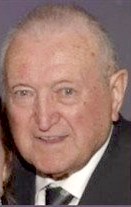 Martin
Legath, 87, of Dobbs Ferry, New York, died peacefully on November 4, 2018. Martin
Legath, 87, of Dobbs Ferry, New York, died peacefully on November 4, 2018.He was the husband of the late Emma (Gober) Legath, who died in 2015. Martin was born in Deutsch Ehrensdorf, Austria and came to the United States in 1960. They settled in the Bronx and moved to Dobbs Ferry in 2001. Martin was a butcher by trade in the Bronx for many years. He was a member of the Austrian Club in Queens. Surviving is his son Herbert and his wife Barbara, and grandchildren Ryan, Richard and Emily. Besides his wife Emma, Martin was also predeceased by his daughter Heidi in 1988 and his grandson Erik in 2006. Memorials to the Cystic Fibrosis Foundation, Westchester Chapter, 200 Mamaroneck Avenue, Ste. 603, White Plains, NY 10601. www.cff.org/westchester. Funeral service will be Wednesday, November 7, at 12:00 pm at the Edwards-Dowdle Funeral Home, 64 Ashford Avenue, Dobbs Ferry. Edwardsdowdle.com Published in the The Journal News on Nov. 7, 2018 William Reisinger   Colonel
William J. Reisinger, 97, of Mechanicsburg, Pennsylvania, passed away November 13, 2018,
surrounded by his family. Colonel
William J. Reisinger, 97, of Mechanicsburg, Pennsylvania, passed away November 13, 2018,
surrounded by his family.William was preceded in death by his loving wife of 69 years, Anna M. (Andreas) Reisinger. Born in Zahling, Austria, he was the youngest of thirteen children born to Josef and Maria (Salber) Reisinger. He honorably served the United States in the Air Force earning the rank of Colonel before retiring after over 30 years of service. William is lovingly remembered by his two daughters, Diana Loyer and Carolyn Reisinger, three grandchildren, six great-grandchildren, and many nieces and nephews. Services will be held at 10AM on Saturday, November 24, 2018. A viewing will be held from 9AM until the time of service, all at Weber Funeral Home 502 Ridge Avenue Allentown, PA 18102. Donations may be made in William's memory to the Wounded Warrior's Project, PO Box 758517, Topeka, Kansas 66675-8517. Published in Morning Call on Nov. 22, 2018 |
||||||||||||||||||||||||||||||||||||||||||||||||||||||||||||||||||||||||||||||||||||||||||||||||||||||||||||||||||||||||||||||||||||||||||||||||||||||||||||||||||||||||||||||||||||||||||||||||||||||||||||||||||||||||||||||||||||||||||||||||||||||||||||||||||||||||||||||||||||||||||||||||||||||||||||||||||||||||||||||||||||||||||||||||||||||||||||||||||||||||||||||||||||||||||||||||||||||||||||||||||||||||||||||||||||||||||||||||||||||||||||||||||||||||||||||||||||||||||||||||||||||||||||||||||||||||||||||||||||||||||||||||||||||||||||||||
| END OF NEWSLETTER (Even good things must end!) |
||||||||||||||||||||||||||||||||||||||||||||||||||||||||||||||||||||||||||||||||||||||||||||||||||||||||||||||||||||||||||||||||||||||||||||||||||||||||||||||||||||||||||||||||||||||||||||||||||||||||||||||||||||||||||||||||||||||||||||||||||||||||||||||||||||||||||||||||||||||||||||||||||||||||||||||||||||||||||||||||||||||||||||||||||||||||||||||||||||||||||||||||||||||||||||||||||||||||||||||||||||||||||||||||||||||||||||||||||||||||||||||||||||||||||||||||||||||||||||||||||||||||||||||||||||||||||||||||||||||||||||||||||||||||||||||||
|
Burgenland Bunch Newsletter, copyright © 2018 by The Burgenland
Bunch |
||||||||||||||||||||||||||||||||||||||||||||||||||||||||||||||||||||||||||||||||||||||||||||||||||||||||||||||||||||||||||||||||||||||||||||||||||||||||||||||||||||||||||||||||||||||||||||||||||||||||||||||||||||||||||||||||||||||||||||||||||||||||||||||||||||||||||||||||||||||||||||||||||||||||||||||||||||||||||||||||||||||||||||||||||||||||||||||||||||||||||||||||||||||||||||||||||||||||||||||||||||||||||||||||||||||||||||||||||||||||||||||||||||||||||||||||||||||||||||||||||||||||||||||||||||||||||||||||||||||||||||||||||||||||||||||||
 News
News